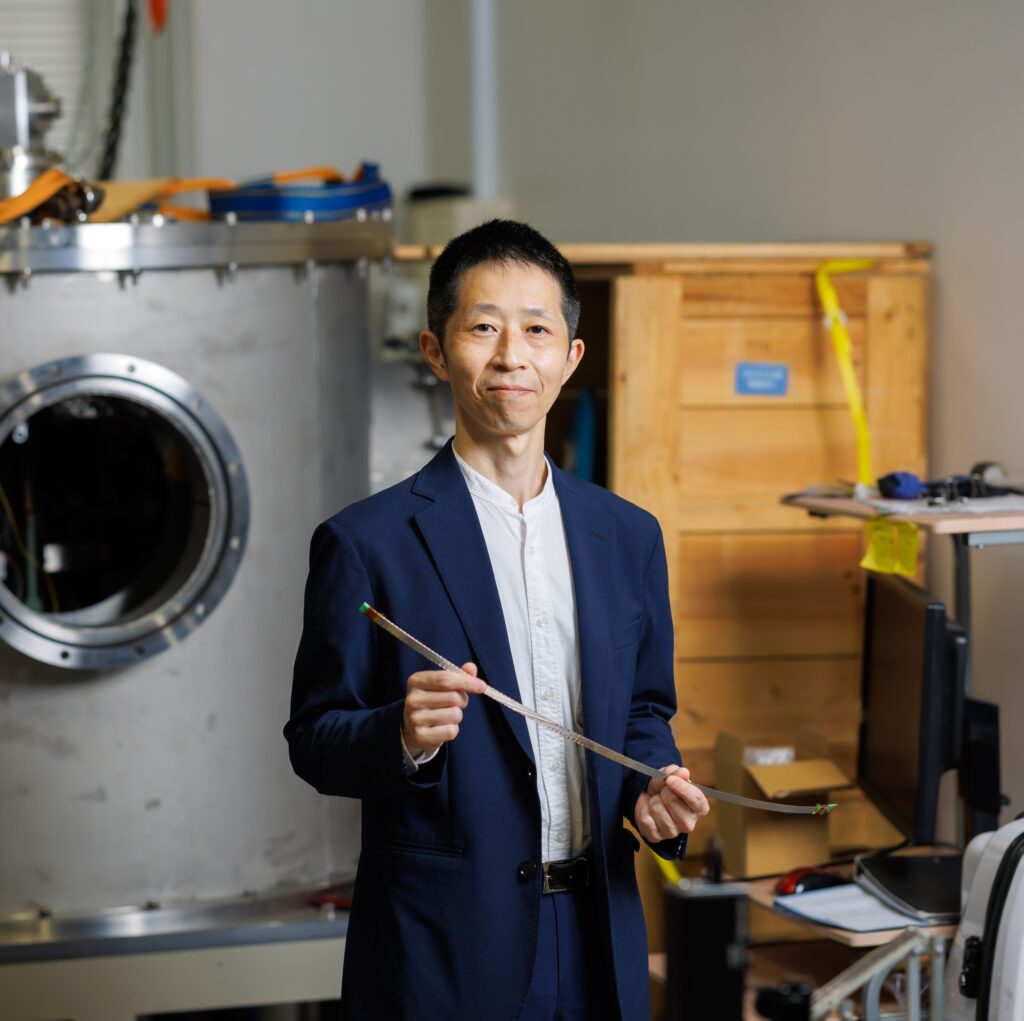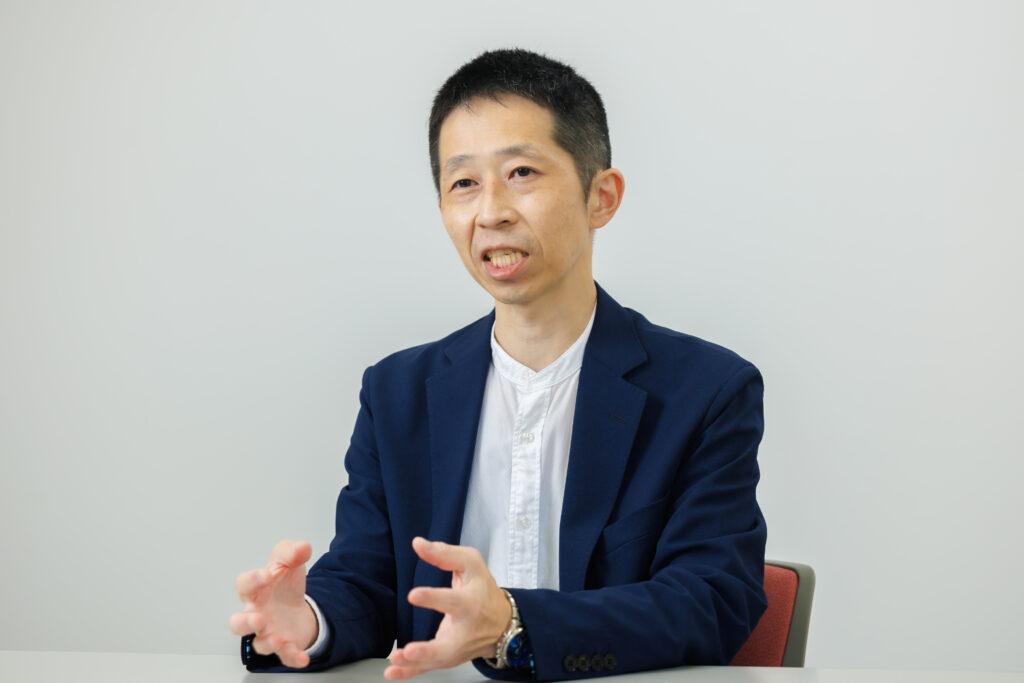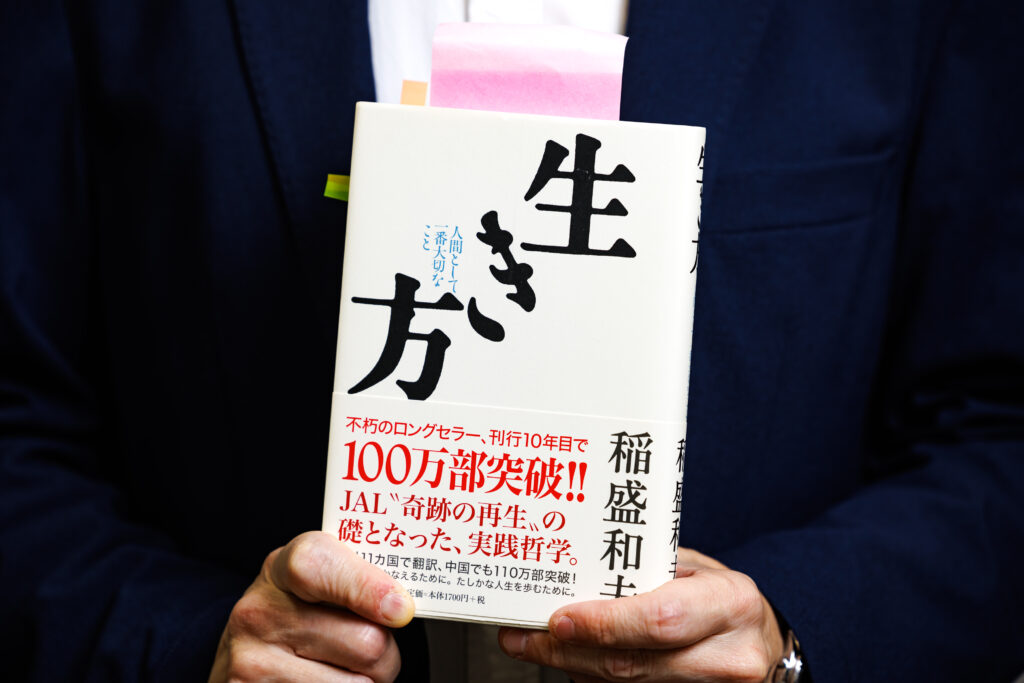
The field of expertise of Professor Yagai of the Faculty of Science and Technology is applied superconductivity, with which electrical resistance becomes zero under certain conditions. The epoch-making electricity storage systems to which this is applied has the potential to take us beyond decarbonization and nuclear power phase-out to realizing a hydrogen society.
The phenomenon in which electrical resistance becomes zero when substances are cooled to extremely low temperatures is known as superconductivity. When electrical current is passed through coils made out of superconductive material that produces powerful magnetic fields, that current continues to circulate throughout the coil semi-permanently without stopping or weakening.
Superconductive coils like this are already being used in MRIs and for other medical purposes, but there has been growing interest in recent years on applications to a new type of electricity storage system known as Superconducting Magnetic Energy Storage (SMES), which stores sustained electrical current as magnetic energy. Among these, I believe that SMES systems using the liquid hydrogen that I am developing will contribute greatly to the realization of a hydrogen society.
Hydrogen energy has at last become familiar

Hydrogen fuel is made by breaking down water, and it returns to water during combustion. It produces neither CO2 nor nuclear waste, and there is no chance of supplies running out. However, breaking down water requires more electrical energy than is actually obtained. It would be ideal if the burden on the environment could be reduced by using renewable energy, but this disadvantage of this is that the amount of power produced by solar generation and wind-power generation fluctuates in accordance with meteorological conditions, and we are a long way from making it pay for itself. Due to this, most of the hydrogen fuel currently available has either been generated through the conversion of fossil fuel or as a byproduct of other industrial processes, which means that CO2 is emitted during the generation process.
However, hydrogen is recently being generated from low-quality coal that is unsuitable for use as a conventional fuel, and when this is combined with technology for collecting carbon, it is possible to manufacture hydrogen at low cost and with a low environmental burden. In addition, a project has been launched to import hydrogen liquified with the use of surplus renewable energy. Liquid hydrogen can be evaporated for use in power generation, while the cold energy of liquid hydrogen can also be effectively applied in the new power system centered on Superconducting Magnetic Energy Storage (SMES). Although these processes are less than ideal, SMES does have the potential to accelerating the move toward a hydrogen society.
Using hydrogen as a coolant for SMES has broken the record for power storage efficiency
SMES is capable of controlling the entry and exit of electrical current in units of 1/1,000 of a second, and almost all momentary voltage fluctuations are absorbed and leveled out to stabilize the power system. Power loss is extremely small, and there is no deterioration even during repeated electrical charging and discharging. This means it has the potential for creating safe, clean and efficient power systems that will cover the shortcomings previously mentioned for solar generation and wind-power generation.
The problem is, the superconducting coils, which are the “heart” of SMES, have to be cooled to extremely low temperatures with liquid gas. The real battle begins in selecting the materials and devising elaborate designs to lower costs as far as possible while increasing the storage capacity in order to increase the efficiency of the system.
In 2021, my team set a new record for power storage efficiency with a system that cooled a coil made of magnesium diboride, which is inexpensive and easy to obtain, with liquid hydrogen, and this generated a large amount of attention at an international conference. The results of experiments were practically the same as our calculations, which built our confidence with regard to our design skills. Furthermore, this system also reuses the evaporated hydrogen―from the liquid hydrogen used for cooling-as a fuel for generating electricity. Using hydrogen in a dual role like this will result in a substantial reduction of costs.
Installing compact SMESs in hydrogen stations, the number of which is expected to rise in the future, will allow them to be used in distribution-type power supply systems that play a powerful role during natural disasters. I personally believe that a hydrogen society is beginning to become visible at the end of the tunnel.
The book I recommend
“Ikikata (A Compass to Fulfillment)”
by Kazuo Inamori, Sunmark Publishing, Inc.

I encountered this book four years ago. At that time, my research was moving ahead favorably, but I was going through a period where I was trying to find a way for my research to benefit society. This book helped me to collect my thoughts gave me much needed direction, not in my research, but in my life.
-
Tsuyoshi Yagai
- Professor
Department of Engineering and Applied Sciences
Faculty of Science and Technology
- Professor
-
Received his Ph.D. in Engineering after completing a doctorate course majoring in electrical and communications engineering at the Graduate School of Engineering, Tohoku University. Worked as a research associate and assistant professor at the Graduate School of Engineering, Tohoku University, then in 2007, as a visiting fellow at the Massachusetts Institute of Technology. Was appointed associate professor of the Department of Engineering and Applied Sciences, Faculty of Science and Technology, Sophia University, in 2010. Was appointed to his current position in 2018.
- Department of Engineering and Applied Sciences
Interviewed: October 2022